#and i like Egyptian art/myth/deities quite a bit
Explore tagged Tumblr posts
Text
I legitimately thought it was a photo till I read. Also 17hrs?? This looks like it would take so much longer so 👏 for finishing something so realistic in 17hrs!
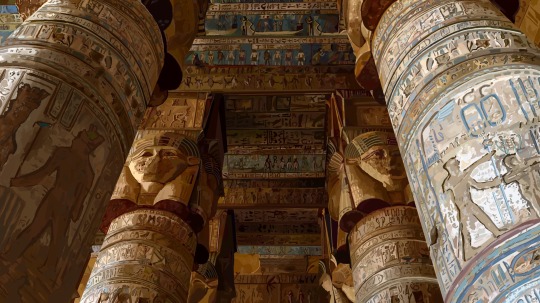
I know this isn't ninjago guys but I finished this 17 hour painting for my art class and I was proud of it so...enjoy.
I love Egypt fun fact about me. :)
#painting#sharing others art#rebloging#this is amazing#and i like Egyptian art/myth/deities quite a bit#used to be hyperfixated on it in fact#so this was nostalgic for me#also thank you#this was really amazing#keep up the good work
152K notes
·
View notes
Text
Ancient dichotomy
Eagle/Phoenix vs Serpent/Dragon: sacred vs unholy
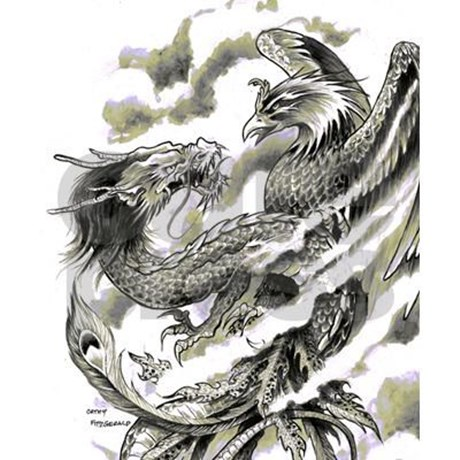
I wanna talk about something that is central to my lore and story, and one of my favorite themes to work with: duality, in this case a very specific one.
In mythology around the world, the eagle and the snake represent the conflict of opposites. Predator and prey, interchangeable, locked in eternal dance.
They are the precursors to my whole concept of phoenix and dragon. In most cultures, eagles are seen as visionaries and messengers of the gods, while snakes represent transformation, death and rebirth (growth). This dichotomy is very commonly found in imagery around the world and mirrors my own stuff with the whole rivalry between the primeval gods, the eternal dance of the cosmos and ultimately avians and draconians.

The meaning of the battling serpent and eagle found in western imagery ties directly with the symbolism of both animals.
The eagle is a logical choice for representing a group, or the power of god. It stands for admirable, intimidating power, which is why it appears in connection with so many political entities.
The serpent represents many things, including healing, fertility, poison and medicine.. whoever in the west its often associated with evil, vengefulness and vindictiveness because of the Bible story in which the snake offers Eve the fruit from the forbidden tree, “the tree of the knowledge of good and evil.”
However, as we’ll see next, the relation between both entities isn't fixed.
Egyptian falcon and snake:
Serpents weren't regarded as symbols of evil in Ancient Egypt, however, there’s still some animosity between the falcon god Horus and them.

Seth, the enemy of Horus is sometimes refereed as “the serpent”. Horus role as the opponent of Seth is assumed as the most sacred bird of the Egyptians, the falcon, attacking Seth whom takes refuge in a hole in the ground, like a snake. However they’re shown to cooperate at times and the primeval antagonism is clouded by the joining of Nekhebet the vulture goddess of upper Egypt and the Wadjet serpent of lower Egypt on royal diadems.
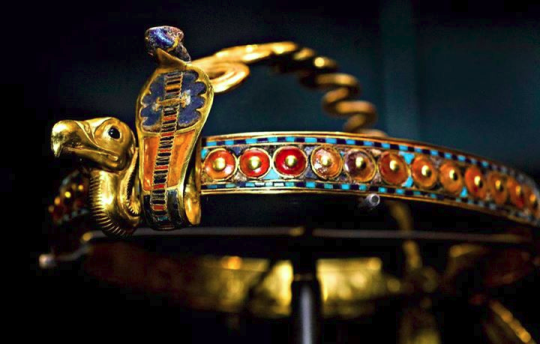
During the late period when Horus became a popular god he was sometimes represented as a naked child standing above a crocodile holding in his hands snakes, scorpions and lions. Therefore Horus became known as an entity that interceded to heal and soothe snake bites and scorpion stings.
Even more interesting is the role of the primordial Egyptian serpent, Apep:
Ra was the solar deity, bringer of light, and thus the upholder of Ma'at. Apep was viewed as the greatest enemy of Ra, and so was given the title Enemy of Ra, and also "the Lord of Chaos". In later Egyptian dynastic times, Ra was merged with the god Horus, he was associated with the falcon or hawk.
As the personification of all that was evil, Apep was seen as a giant snake or serpent leading to such titles as Serpent from the Nile and Evil Lizard.

The Roman eagle also eats snakes:
Eagles killing snakes were popular subjects in Roman art. The sculpture was probably chosen to please the god Jupiter and depict the triumph of good over death and evil, but it was also a way for wealthy families to show off and commemorate their deceased loved ones.

Some other classical examples:
Mosaic floor from the Imperial Palace in Constantinople, showing eagle and serpent in battle:

A Homeric omen: A Greek wine cup with a scene of an eagle battling a snake. Homer’s description of a high-flying bird carrying a snake in its talons was an omen the Trojans saw as they attacked the Greek forces. Homer's snake was still alive and was dropped by the eagle before it could be eaten.

In the Persian mythology we have the Zahhāk (Avestan word for "serpent" or "dragon."), generally an evil figure, sometimes seen as enemy of the Simurgh (phoenix), adopted from a common source of cosmological knowledge.
The founding of Tenochtitlan, Mexico City:
The Mexican emblem shows an eagle devouring a serpent, which actually is in conflict with Mesoamerican belief. The original meanings of the symbols were different in numerous aspects, being the eagle a representation of the sun god Huitzilopochtli, who was very important to the ‘people of the sun’; and the snake a symbol of wisdom, with strong connotations to the god Quetzalcoatl.

The story of the eagle and snake was derived from an incorrect translation in which "the snake hisses", was mistranslated as "the snake is torn". Based on this error, the legend was misinterpreted and as a result the eagle represents all that is good and right, while the snake represents evil and sin, being used as an element of evangelism by the first missionaries to convert native people, as it conformed with European heraldic tradition and Christian lore.
Zodiac:
The eagle and the serpent are both variant symbols for the astrological sign of Scorpio, whose basic level, that of the scorpion was depicted by the ancient zodiac as the serpent. Both are poisonous creatures that hide under rocks, always ready to attack, representing negativity and resentment, yet strongly related to initiation into the sacred mysteries.
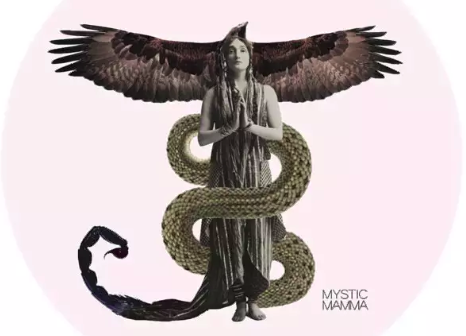
The eagle is another, higher level of the sign, regarding strength and wisdom, incidentally, the highest level is the phoenix, a ‘transformed eagle’ whom soared as a higher expression of the nature of this sign: transcendence from the crawling scorpion/snake to the soaring eagle/phoenix, tying together the theme of destruction and renewal.
Garuda and Nagas:
Now, going back a bit in time... The great nemesis of the nagas in the Mahabharata is the gigantic eagle-king Garuda.
According to Hindu and Buddhist stories, the giant, birdlike Garuda spends eternity killing snakelike Nagas. The feud started when both Garuda's mother and the Nagas' mother married the same husband. The husband then gave each wife one wish. The Nagas' mother asked for a thousand children. Garuda's mother wished for just two children who were superior to all of the Nagas. Their rivalry continued until Garuda's mother lost a bet and became the servant and prisoner of the Nagas' mother. Garuda was able to free his mother by stealing the nectar of immortality from the gods. But he swore vengeance for his mother's treatment and has been fighting Nagas ever since.
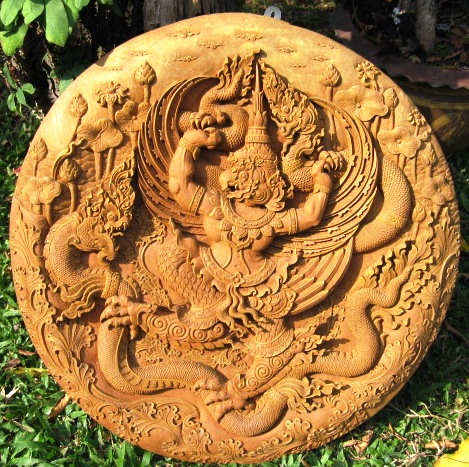
The Japanese version of the myth, called Karura, is said to be enormous, fire-breathing, and to feed on dragons/serpents, just as Garuda is the bane of Nagas. Only a dragon who possesses a special talisman, or one who has converted to the Buddhist teaching, can escape unharmed from the Karura.
Once more we witness the eternal rivalry between the eagle and the serpent.
Allegorical conclusion of the Christological cycle. The bird and the snake:
Early Christian writers used the phoenix bird as a symbol not only of resurrection in general but also of Christ himself. Here is an example of the Incarnation or a symbolic portrait of Christ overcoming the devil, depicted allegorically in the form of a bird fighting a serpent.

The Dragon:
As we've been able to witness, the serpent symbol is decidedly more ambiguous than the eagle, so I’d like to focus a bit on it:
With a few allegories one is able to establish the dragon as an entity derived from the snake, and the phoenix as an entity derived from the eagle. Now, going from the root symbol of serpent to its representation as the dragon:
A serpent and a dragon are often interchangeable in some proses, including the Bible and Old Norse poetry. The poem Beowulf describes a dragon also as wyrm (worm, or serpent) indicating a snake-like form and movement rather than with a lizard-like or dinosaur-like body. In the Far East, few distinctions are made between them.
Having established the dragon as the synonym of serpent, with similar meaning in the duality theme I’m working here... its noteworthy that the dragon usually carries negative connotations, especially in its more popular form, just as the phoenix usually carries positive connotations.
The medieval dragon. In medieval symbolism, dragons were often symbolic of apostasy and treachery, but also of anger and envy, and eventfully symbolized great calamity. Several heads were symbolic of decadence and oppression, and also of heresy. An evil dragon is often associated with a great hero who tries to slay it.

But dragons aren't always related to evil in traditional representation, just as their prototype, the serpent. In some countries, it was said a good dragon would give wise advice to those who seek it.
In ancient Greece, the snake figure was associated with Asclepios, the god of medicine, and possessed benevolent properties, believed to be able to cure a patient or a wounded person just by touch.
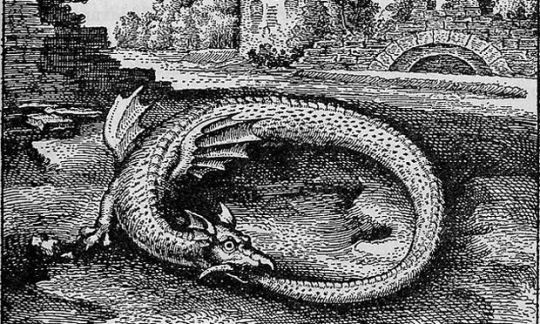
Also, a serpent biting its tail symbolized eternity and the soul of the world, being sometimes described as part dragon.. it surrounds the world. The alchemical symbol of the Ouroborus often carries positive connotations.
Fenghuang and Dragon, a more balanced view:
The fenghuang is a mythological bird of East Asia that reign over all other birds. The males were originally called feng and the females huang but such a distinction of gender is often no longer made and they are blurred into a single feminine entity so that the bird can be paired with the Chinese dragon, which is traditionally deemed male.
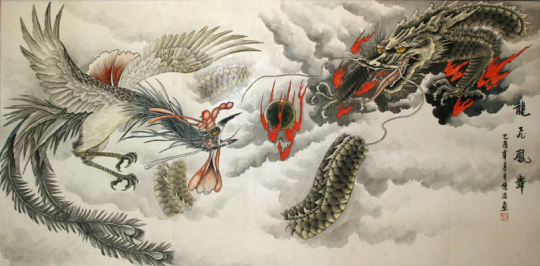
Fenghuang ,the "Sovereign of Birds" came to symbolize the empress when paired with a dragon as a dragon represented the emperor.
In ancient and modern Chinese culture, the fenghuang can often be found in the decorations for weddings or royalty, along with dragons. This is because the Chinese considered the dragon and phoenix symbolic of blissful relations between husband and wife, another common yang and yin metaphor.
Ancient & modern interpretations
Looking back its easy to see why those two archetypal symbols carry such antagonist interpretations... the eagle is easily a ‘good animal’. The eagle does not impact negatively human life (or it rarely does), quite the contrary. Birds of prey, including eagles, have been trained and used to our benefit, serving as companions and valuable hunting assets during our early history.
The eagle obviously has an impressive figure, and its always sky high.. human’s natural curiosity to see more of the world and have freedom has led us to naturally admire and envy animals able to fly. They are often carrying spiritual/divine connotations, on top of that, we’re both diurnal animals. An eagle is often seen or glimpsed under situations that are ‘positive’ to our primeval brains: its visage is often accompanied of imagery of large, open spaces, bright blue skies and sunlight, more or less comfortable scenarios that inspire feelings of freedom, awe and perhaps even religious reverence.
The soaring eagle rises above earthly limitations.
The serpent otherwise carries strong negative connotation to primitive humans, it is visually connected with the underworld and darker places, the unknown, the unseen... not only because it crawls on the ground, but because it can bring death, its easily a dangerous creature and its rather easy to see why it served as inspiration to so many mythological creatures as it inspired a lot of fear in our ancestors. Its almost like a primeval fear, imprinted in our brains...

However, as the lines between light and darkness become blurred and the definitions of symbolism gains new interpretations in our modern era, the ancient meanings still carry a lot of weight, still... in the recent history, the eagle, a supreme symbol of divine light has gained a certain negative connotation: imperialism and supremacy: claws grasping for power, wings outstretched, its shadow covering the world... while its counterpart, the serpent, has also emerged from the underworld and has been adopted as the symbol of the modern medical profession and the image of these animals has strongly improved with the knowledge of biology and of their nature.
Converging meaning
The eagle and the snake are some of the symbols with the strongest presence in the history of mankind. Separately they have their presence widespread, while together we have a more interesting conflict.

In the modern view of most myths, these two symbols clearly express fundamental opposites: height/depth, heaven/earth, etc... however it wasn't always the case, and sometimes these symbols cooperate, or act as halves of the same whole. Specially regarding the serpent half, if you dig just a little its easy to start finding more sensible or sympathetic incarnations of this animal through the world mythology, with more benign variations such as the eastern dragon. It becomes clear that the dichotomy isn't so simple as ‘life against death’ or ‘good against evil’.
Together they are a pair of opposites: the soaring and the creeping.
I think that, concerning those aspects.. the far eastern mythologies offer the best incarnation of the primeval duo or eagle and serpent, the phoenix and the dragon.
I want to work my phoenixes and dragons for something in between, they’re capable of great destruction as much as they’re capable of great good.
The Eagle and the Serpent as One Entity
In my world, the phoenix and dragon have superficial and deep meanings. Its easy to overlook their more common representation as opposites, and delegate the phoenix with positive meaning while the dragon is surrounded by negative energy, and its easy to simply do the opposite.. I mean to find a balance between the two.
When the eagle and serpent are perfectly paired as opposites, and equals... as phoenix and dragon, the superlative form of these creatures... they represent not victory and defeat, not light and darkness nor good and evil, but dynamic cosmic completion, the union of spirit and matter, as shown in the common emblem of their cosmic dance:
United they are stronger, they are whole. This is the force that drives the universe as the celestial bird and the serpent wheel around each other forever, in perfect balance of opposite energies, or ideally it should be like this..
It is such an interesting and very ancient symbol.. like yin yang..or the masculine and the feminine.. it shows two powerful people combining forces to create something very dynamic or shape shifting.. being able to shape a new reality..
It’s left for the characters to find common ground and forge a better future.
81 notes
·
View notes
Text
The Deities Project: Part 8
An early notion for the Keys & Kingdoms universe was to divide its world into sections ruled by three pantheons, and those would be the historical pantheons of Greek, Norse, and Egyptian mythology! As it turned out, the 3rd Edition D&D supplement “Deities & Demigods” included stats for those exact three pantheons, and I carefully studied that for guidance on how to reinterpret those legendary pantheons for use in a fantasy world.
And so began this project: drawing all 53 historical deities depicted in that book. Casey Gosselin drew their symbols and Stacy Lord drew the characters themselves. Neither saw the illustrations in the D&D book, but we stuck to what the book claimed as their symbol, their sacred weapon, and very general appearance. The big project lasted from October 2019 to August 2020. Since then, we’ve been putting more research into the real myths and other gods, but these will still form the foundation for the core members of the pantheons and what they’ll look like when the K&K universe begins.
This is an 11-part series presenting all the art anew and talking about the ideas behind it! Presented in the order in which they were done, which is approximately in the order of strongest to weakest according to their rankings in the D&D book. Don’t forget to check out Stacy and Casey’s own pages:

What little research I’ve done on the Egyptian pantheon has brought forth one rather obvious conclusion: that the D&D version of Bast has a lot more in common with Sekhmet than Bast. Now, I don’t have any issue with combining the two catgirl deities together to streamline the pantheon, but why did they call her Bast when she was very much Sekhmet…? I do want to bring Sekhmet back into the story as an actual character. Lots of iconic deities in all three pantheons who were left out of the book, they can be minor characters in the K&K universe.
Her design isn’t quite what I had in mind… as a fuzzy kitty in this dress, she just looks a bit too domestic. I wanted her cat face to be gaunt and feral, and her dress to be… well, somehow more appropriate for a lady of war, there’s some intangible quality that makes the dress look more like that of a suburban mom instead; not sure what that quality is and how to change it. Keeping in mind that I am bringing Sekhmet into the K&K universe, Bast ought to be more domestic than Sekhmet, but… still, not by this much.

In the myths, Hathor does have a cow motif but not usually the actual head of a cow. Yes, it would seem the D&D folks took a lot of creative liberties with Hathor, making her the daughter of Horus and sister of Bast, and as mentioned the one they called Bast was really Sekhmet… both were actually the daughters of Ra and consorts of Horus… I mean, I’m all for making their family trees less tangled, the famously-entangled family trees of the Greek gods seemingly don’t have shit on the Egyptians.
Anyway, with her cow motif, I thus also gave her very mild Hindu motifs - again, not restricting these characters to the cultural motifs of where they actually come from, so they represent the whole world!
This was, perhaps, the only symbol I asked Casey to redo - her first attempt at a cow’s face looked too much like a sheep.

This obscure Titan was included in the D&D Greek pantheon, I assume, due to the need for one themed around trickery and luck. Always needing deities to fit every domain! And for similar reasons, Tyche later became the inspiration for the 4th Edition goddess Avandra.
Both Casey and Stacy count their work on Tyche among their least-favorite designs: Casey felt Tyche’s pentagram was lopsided and uneven, while Stacy thinks she got the perspective on her face all wrong. Neither are really a dealbreaker for me, I only recall my suggestion that she wear a cornucopia-shaped hat and then… having to figure out alongside Stacy what the heck that actually looks like. Good result!

Here’s a bit of world-building lore I decided on: while Gaia and most of her descendants qualify as Titans, the six children of Kronos and Rhea have a different nature and are Olympians - perhaps due to a prophecy that made Kronos paranoid they’d overthrow him. The six Olympians’ divine-born children are also Olympians, but their godly grandchildren, such as Pan here, have a lesser nature and are instead called Arcadians, so named for Pan setting up a fey sanctuary called Arcadia in this universe.
A favorite design of mine - largely due to the novelty of being the only god who appears as a satyr, when so many are human-looking it got a bit dull after a while. The general anatomy of a satyr in the K&K universe will need some work which results in changes to his design, but one particularly brilliant improvisation on Stacy’s part I absolutely adore - zoom in on his eyes and you’ll see he has horizontal, almost rectangular pupils, just like a real goat. That was awesome.
His syrinx, or panpipe, also needs some work. It’s the only weapon he carries and is also his symbol; Casey’s interpretation looked a bit more like a picket fence. I figure Pan invented the syrinx, hence it also being called a panpipe, and the one he carries and uses as his symbol was his prototype, so I figure it’s very primitive and held together with twigs and twine.

Bes in my research seems very different from the other Egyptian gods - there doesn’t seem to be any common iconography of him that most of the Egyptian gods have from the walls of tombs and stuff. Scholars suggest he was perhaps an import to Ancient Egypt from its less-famous southern neighbor, Nubia. And it would seem he wasn’t so much a deity as a good-luck charm, with many people having little stone statues of him in their home to ward off evil.
Regardless, before doing my actual research, I followed along with how the D&D book depicted him; as a hunchbacked dwarf or gnome, ugly but exceedingly cheerful; instead of the furry club tail he has in that book, I gave him more of a dinosaur tail, but still with the pigmentation of his own human skin for a slightly unsettling look.
0 notes
Text
The Wicked + The Divine: Fandemonium by Kieron Gillen. Art by Jamie McKelvie. Coloured by Matt Wilson. Lettering by Clayton Cowles.
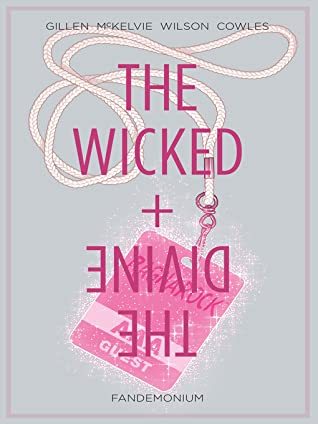
Series: The Wicked + The Divine, #2 Read time: 1 Day Rating: 4/5
The quote: "This is fandom. Not many angry white guys in fandom." — Cassandra
I'm coming back to this series because I'm hitting a reading slump and I find graphic novels help pull me out. I'm going to start with the ending. This volume ends in such an odd place usually when I read I read one then review it before moving on. This time I couldn't I needed to know what came next. I needed answers to the questions that are posed by the ending. Because there are many. Fandemonium picks up a month after The Faust Act and the death of Luci. Laura is still our eyes to the world, still trying to unravel the mysteries around Luci's death. She is hurting and confused and possibly a little in love with the memory of Luci. Laura has a rather patronising nickname that is only half explained, 'Prometheus' (another myth reference).
Very early on she meets a character that we had references to in The Faust Act but never met the stunning Inanna. Inanna is not like the others that we've met, he's more trusting and sweet, a bit of a mix between Amaterasu and Minerva. Inanna looks fantastic, his whole deal is wonderful and he's a gender-bend of his original form. His gift is divination, I quite like the way his magic is presented in a pinky/purple sparkle. His outfits are so audacious so becoming of his stage persona which we also get to see. Interestingly Inanna recognises Laura from before, before his godhood, they have a connection and I really like their dynamic. Inanna introduces Laura and the reader to the 11th god, Dionysus. Dionysus I really like. His eyes are pitch black and he seemingly has a laurel crown tattooed on his head. His whole style is much more relaxed than all the others, pressed pants and a yolo tee, fully suiting his mythological duties. I really like how he treats Laura. He honours her, allows her to experience his environment within her limits and helps her when she's done. As a side note... Minerva has one of the cutest nicknames from Baal, Baal who is particularly of her, he calls her Mini. She's so small and young, you have to remember reading this that Mini is only 12 and will be dead before she is 15.
I do want to comment on the art for a second. There is so much effort put into the speech bubbles. Woden's speech bubbles have always suited his presentation, that Tron like appearance with greens matches his bubbles. But the same effort is shown clearly in Dionysus and Inanna's. Dionysus runs a rave (like all the time) his is a black background with fluoro pink and white writing. Inanna's is fully complementary to his standard outfit, a dark almost lavender background with white writing. Both the bubble styles suit the characters. Dionysus comes across as a bit perpetually wired and Inanna is one of the calmer of the 12. On Dionysus and that rave... that is such well-done artwork there. All mad electro colours and sharp cuts. We see it through Laura's eyes but all the major players' bar a few are there. We see people interacting on different levels. I just appreciate the different style for what is a very out-there moment, especially for our main character.
By the end of Fandemonium, we've met all 12 of the gods on the wheel. As the gods die or as their situations change their icons change, death turns them into a skull. Going clockwise around the wheel.
Amaterasu — Japan goddess of the sun and the universe; the mythical ancestress of the Imperial House of Japan
Lucifer — Christianty the devil, a fallen angel.
Sakhmet (aka Sekhmet) — Egyptian a warrior goddess as well as goddess of healing
Baphomet — a god worshipped by the Knights Templar. He's a bit of a black sheep as a deity, yes it means something, yes, his existence in the Pantheon is eventually explained.
Minerva — Roman goddess of poetry, medicine, strategic warfare, commerce, weaving, the crafts, wisdom, courage, inspiration, victory, war, law, civilization, bravery, heroism, protection, city state, family, justice, mathematics, science, technology, strength, strategy, the arts, and skill
Woden (aka Odin) — Norse god of wisdom, poetry, death, divination, and magic
Morrigan — Celtic goddess of death and battle. A trio of sisters who appeared as a crow, she was the keeper of fate and purveyor of prophecy.
Dionysus — Greek god of the vine, grape-harvest, wine-making, wine, fertility, ritual madness, religious ecstasy, theatre
Inanna (aka Ishtar) — Mesopotamian goddess of sex, love, war, justice, and political power.
Tara — Hinduism and Buddism goddesses representing the fundamental female aspect of the universe, which gives birth to warmth, compassion and relief from bad karma as experienced by ordinary beings in cyclic existence (samsara).
Baal — Canaanite god of fertility, weather, rain, wind, lightning, seasons, war, sailors
Urðr — Norse one of the Nord the goddesses responsible for shaping the course of human destinies. The three Norns represent the past (Urðr), future (Skuld) and present (Verðandi). And lastly not part of the wheel but important...
Ananke — the Greek personification of inevitability, compulsion and necessity
#the wicked + the divine#the wicked and the divine#kieron gillen#jamie mckelvie#matt wilson#clayton cowles#mythological#graphic novel#comics#book review#ktreviews#read 2021#fandom#booklr
1 note
·
View note
Note
!!!! We doing LGBT deities? Apollo (greek god of like 6 things, including music, medical arts, the sun, and archery) and Zephyrus (greek god of the west wind) are both bi! In the myth of Hyacinth, they were fighting over the love of this really handsome dude, Hyacinth, who eventually chose Apollo, and since gods are petty assholes, Zephyrus killed him. Apollo, mad with grief, created the hyacinth flower from Hyacinth's blood (and his own tears in some versions). It's a well known story but still
(appolo & zephyrus anon continued) also like, as a rule, nobody is straight in greek mythology. Poseidon rescued Nerites (a minor sea deity) from being turned into a shellfish by Aphrodite after he refused to accompany her up to Olympus, and in some versions of the myth, they loved each other and from their mutual love Anteros was born, who is the personification of reciprocated love. (1/?)(2/?) Zeus (god of not being able to keep it in his pants) kidnapped Ganymede (cupbearer of the gods) and offered him his current job, which Hera (god of marriage and throwing children off Olympus) didn’t like bc he was too handsome and a rival to her husband’s attention (Zeus later made Gany a constellation, which implies she was right, but it’s a hot discourse topic since Ancient Greece)(3/?) Dionysus (god of wine and chasing nymphs when he really shouldn’t) is also notoriously Not Straight, with multiple myths referring to it, but the funniest is probably the myth of Prosymnus, who helped him when he went to rescue his mother Semele from Hades, and since I want to keep this kid friendly you should probably just search it up but I promise you it’s the funniest thing you ever read(4/?) Speaking of Flower Gays, there’s a myth that’s very similar to the Apollo/Zaphyrus/Hyacinth myth that may be a variation upon that, where Crocus, in this version a lover of Hermes (god of thieves and messengers) were playing a game of discus (like Apollo and Hyacinth were doing), when Crocus died. Hermes then made the Crocus flower out of his blood, like Apollo did for Hyacinth. (There’s also another, presumably straighter version of the myth where Crocus had an affair with a nymph)(5/?) And of course, let’s not forget the mortals/demigods in greek mythology: Patroclus and Achilles are famous for the Discourse they caused, Heracles (Hercules) is bi (but unfortunately probably the most famous of his lovers, Iolaus, also happened to be his nephew, which… I mean attitudes of the time and whatever, but still, gross), Agamemnon and Argynnus as told by Athenaeus were lovers, and I could go on and on because greek mythology is GAY(7/?) On the sapphic side, there seems to be less, as I didn’t recall any before I started researching, but there’s still a couple of good stories. Sappho, an actual real life poet who was a sapphic, wrote Ode to Aphrodite, her only fully surviving poem, where the speaker (herself) prays to Aphrodite after being rejected by an unnamed woman. Sappho also named Aphrodite as the goddess of lesbians. Sappho herself is quite interesting and I definitely recommend researching her!(8/?) I personally like the story of Iphis, which, while a bit Problematique by today’s standards, is still pretty okay for a greek mythology thing, if you get what I mean. Iphis was born to a couple that was so poor they could not afford the dowry if their child was a girl, so the husband decided to kill the child if it was a girl. The wife was not down with that, and Isis (an egyptian goddes, strangely enough) visited her at night and assured her that if she had a daughter Isis’d keep her safe(10/10) But lastly, the obligatory disclaimer when talking Greek Mythology is that ancient greece hadn’t realized that pedophelia and incest was wrong, and they rarely adressed rape properly, and this is pretty prevalent in LGBT-flavoured myths, so if you’re planning on researching, take care of yourself. Also, I’m so, so sorry this god so needlessly wrong, greek mythology has been my special interest for so long and this gave me an excuse to research and I went overboard, I’m so so sorry
~
Okay anon, firstly, please do not apologize for your beautiful mythology rambling, I love it.
ALSO calling Zeus the god of not being able to keep it in his pants is so funny oh my god. I really can’t add anything to this because it’s so wonderful and I’m so happy you decided to share it!!!!
~ Chris
26 notes
·
View notes